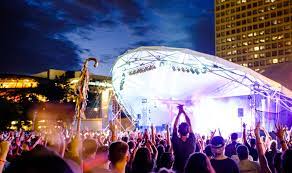The Ottawa Fringe Festival is a yearly fringe theater festival in Ottawa that is very much popular throughout the city. The festival was first introduced in 1997. The festival happens for ten days every June. In this festival, exhibitions are held both inside and out. A Fringe Festival is a discussion that unites audiences and artists in a fun and enjoyable environment.
Ottawa fringe festival is an open-access festival for visitors where 100% of ticket sales go to the artists. No one curates the Ottawa Fringe Festival. Ottawa Fringe programs the festival by lottery and rents the venues. Each show is produced independently and more artists participate in the program by presenting a Bring Your Own Venue show (BYOV).
Ottawa Fringe is an enlisted not-for-profit charitable organization. The Fringe is focused on giving a safe and inclusive space for their festival’s crowds, artists, staff, and volunteers. The Ottawa Fringe Festival gives all performing craftsmen, both established and emerging, the chance to deliver their work, regardless of content, style, or form and makes the Festival as accessible and affordable as possible to the people from the local area.
The Ottawa Fringe Festival’s main goal is to engage crowds and encourage artists to face challenges, pursue their dreams, and foster their skills. The Ottawa Fringe Festival is a part of the Canadian Association of Fringe Festivals (CAFF). CAFF has set up a bunch of rules and philosophies which each Fringe Festival should follow. Fringe Festival performers are chosen in a non-juried process, and the Festival practices no control over the artistic content of the performances. Also as already mentioned above, 100% of ticket income is returned directly to the artists themselves.
Every year, the CAFF touring circuit provides more than 800 theater organizations with a chance to present their work in a steady environment. This circuit appeals to almost 1,000,000 individuals who go to Fringe Festivals in Ottawa every year. This circuit allows for the continued development and progression of audiences and artists from around the world.
Fringe Festivals follow their underlying foundations to Scotland when in 1947 a few theatre companies not invited to take part in the first Edinburgh International Festival arranged shows on the fringe of official venues, setting up in any place they could find space, finding audiences by listening in on others’ conversations and succeeding or failing on the strength of their talents alone.
Accepting this spirit of artistic freedom, the first North American Fringe Festival was set up in Edmonton in 1982. Audiences were uncontrollably eager and the Fringe festival is now second just to the Edinburgh Festival in size. Encouraged by this big achievement, numerous cities across Canada and the United States made Fringe Festivals of their own, each with its own particular style, however, all adhering to the principles of affordability, accessibility, and artistic daring.
Throughout the Ottawa fringe festival, a yard is set up right outside Arts Court to give rewards and a location for mingling with the other artists. Most Fringe performances are plays, and most recently an hour or less. Since 2009, a limited number of 90-minute spots have been accessible. The content of the plays differs since acceptance to the festival is by lottery, and the shows are not juried. Since Ottawa is a bilingual city, both French and English productions are introduced at the Fringe, however, few productions in past years have been bilingual.
Performances all happen in midtown Ottawa. Two of the normal stages are situated at the University of Ottawa, including Academic Hall and Studio Léonard-Beaulne. Three others are situated at Arts Court: Arts Court Library Arts, Court Theater, and Ottawa Dance Directive (ODD Box). The scenes are all within walking distance of each other.
Ottawa fringe festival is the time when everybody sees the most theater they can. There’s always going to be the gems, and there’s always going to be a small bunch of stuff that is plain bad, yet that’s half the fun of it. It’s new work and individuals are trying things since they need to get into theater. They consider Fringe to be the best way to do it.
In case you’re new to the Fringe game, the first thing to know is the selection rule that goes into choosing who will perform. To put it simply, there is none. Everything comes down to the result of pure chance in a lottery that has a geographical bent. That gives you a truly wide range of artists from different locations working in different styles. This festival has comedy, music, puppets, circus, and traditional plays. In case you’re searching for it, they have it. Artists can do anything they desire in front of an audience as long as it’s not illegal.
The Fringe seeks to limit its effect on the artistic choices of its performers. Hence the festival allocates its restricted stage time by lottery, with a specific percentage set aside for local, Canadian, and international visitors. Each winning troupe will play out its show in similar scenes on various occasions, from a little noon to midnight, over a few days.
Each patron should buy a $3 Fringe Pin, which grants them entry for the duration of the festival. Most performances are ticketed events that require the purchase of a ticket on top of the Fringe Pin. Visitors aren’t allowed access to ticketed performances except if they are wearing a Fringe Pin. Tickets commonly cost $12. For those going to various shows, discounted admission is accessible as five and ten-show passes, for $45 and $99 separately. With regards to the core mandate of the Canadian Association of Fringe Festival, 100% of the returns from ticket sales go to the performers.
